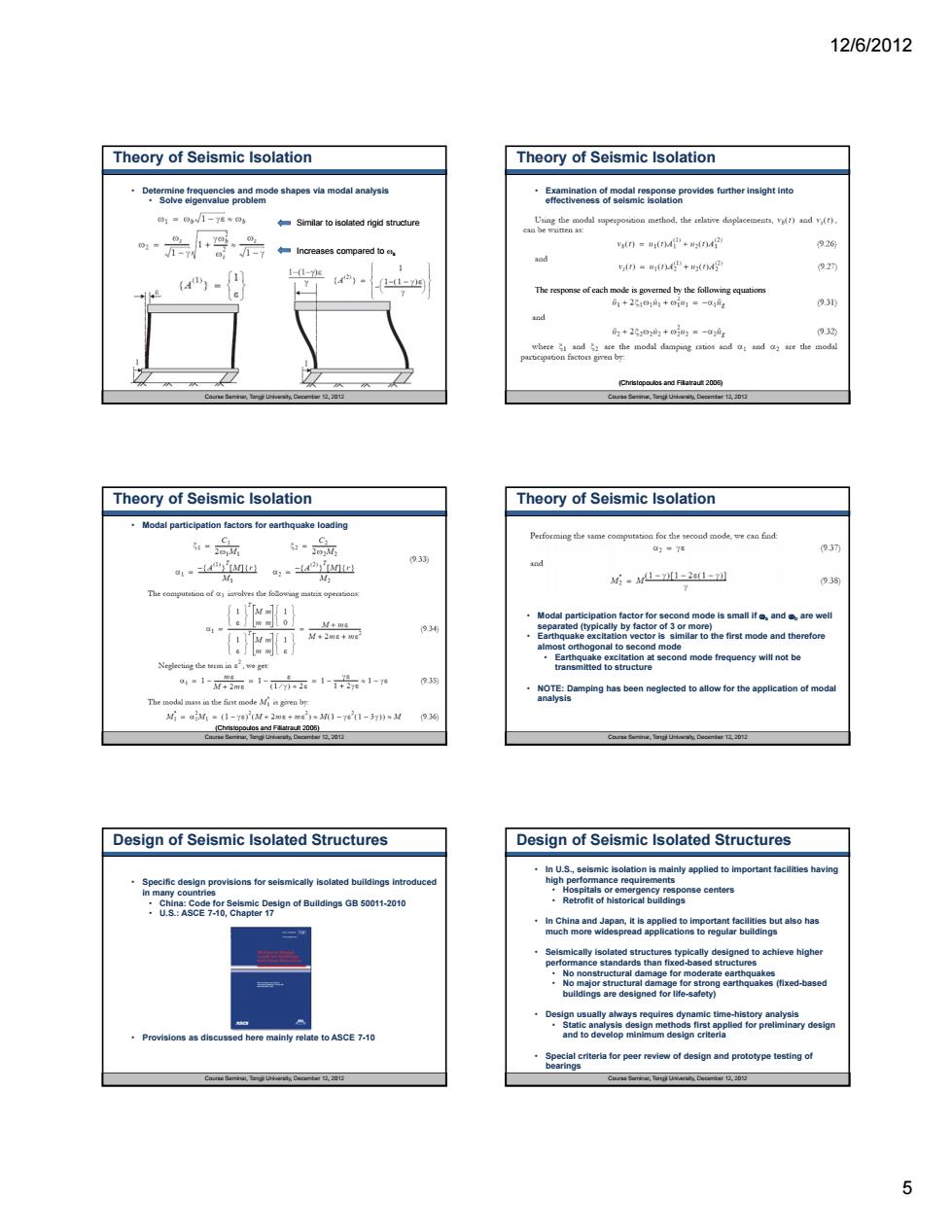正在加载图片...

12/6/2012 Theory of Seismic Isolation Theory of Seismic Isolation vn urtnn n=L4+tn4 ad Theory of Seismic Isolation Theory of Seismic Isolation 93 .ML-m0-21-z mode and t Design of Seismic Isolated Structures Design of Seismic Isolated Structures oBung5011-10 eview of design and prototype testing of 5 12/6/2012 5 Course Seminar, Tongji University, December 12, 2012 Theory of Seismic Isolation • Determine frequencies and mode shapes via modal analysis • Solve eigenvalue problem Similar to isolated rigid structure Increases compared to s Course Seminar, Tongji University, December 12, 2012 Theory of Seismic Isolation • Examination of modal response provides further insight into effectiveness of seismic isolation The response of each mode is governed by the following equations (Christopoulos and Filiatrault 2006) Course Seminar, Tongji University, December 12, 2012 Theory of Seismic Isolation • Modal participation factors for earthquake loading (Christopoulos and Filiatrault 2006) Course Seminar, Tongji University, December 12, 2012 Theory of Seismic Isolation • Modal participation factor for second mode is small if s and b are well separated (typically by factor of 3 or more) • Earthquake excitation vector is similar to the first mode and therefore almost orthogonal to second mode • Earthquake excitation at second mode frequency will not be transmitted to structure • NOTE: Damping has been neglected to allow for the application of modal analysis Course Seminar, Tongji University, December 12, 2012 Design of Seismic Isolated Structures • Specific design provisions for seismically isolated buildings introduced in many countries • China: Code for Seismic Design of Buildings GB 50011-2010 • U.S.: ASCE 7-10, Chapter 17 • Provisions as discussed here mainly relate to ASCE 7-10 Course Seminar, Tongji University, December 12, 2012 Design of Seismic Isolated Structures • In U.S., seismic isolation is mainly applied to important facilities having high performance requirements • Hospitals or emergency response centers • Retrofit of historical buildings • In China and Japan, it is applied to important facilities but also has much more widespread applications to regular buildings • Seismically isolated structures typically designed to achieve higher performance standards than fixed-based structures • No nonstructural damage for moderate earthquakes • No major structural damage for strong earthquakes (fixed-based buildings are designed for life-safety) • Design usually always requires dynamic time-history analysis • Static analysis design methods first applied for preliminary design and to develop minimum design criteria • Special criteria for peer review of design and prototype testing of bearings